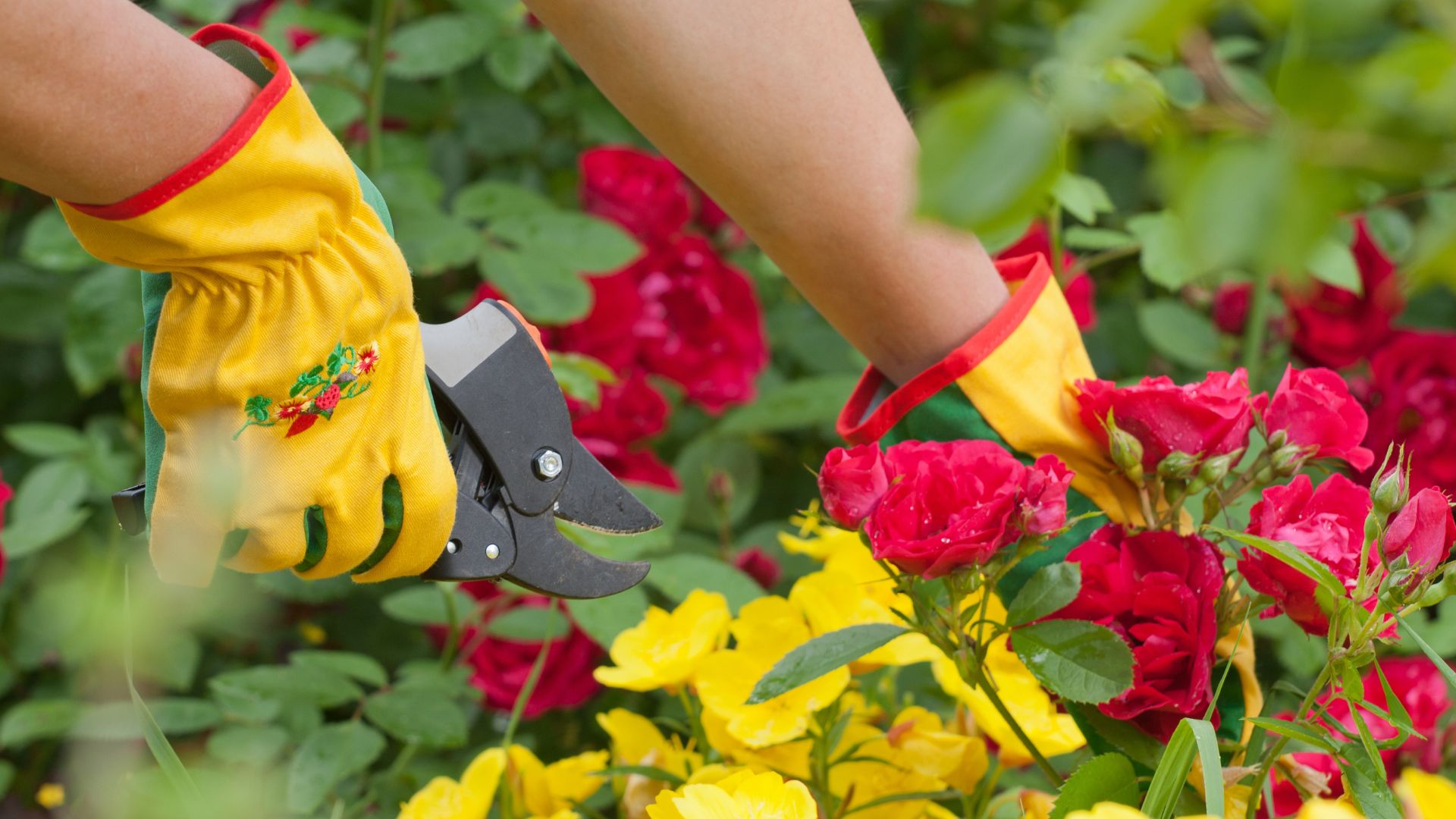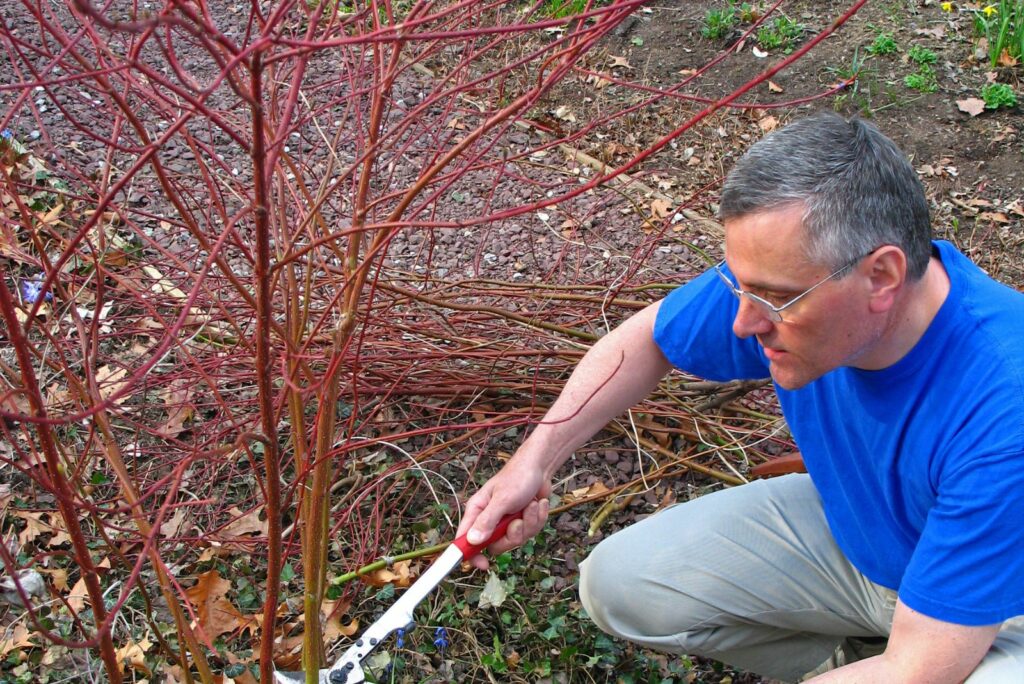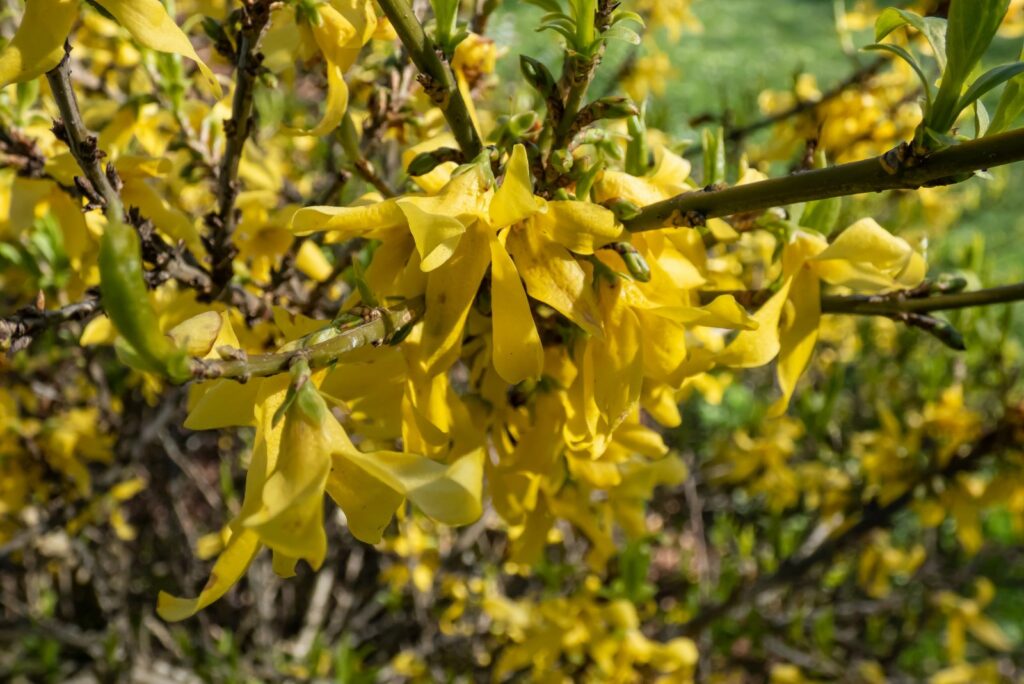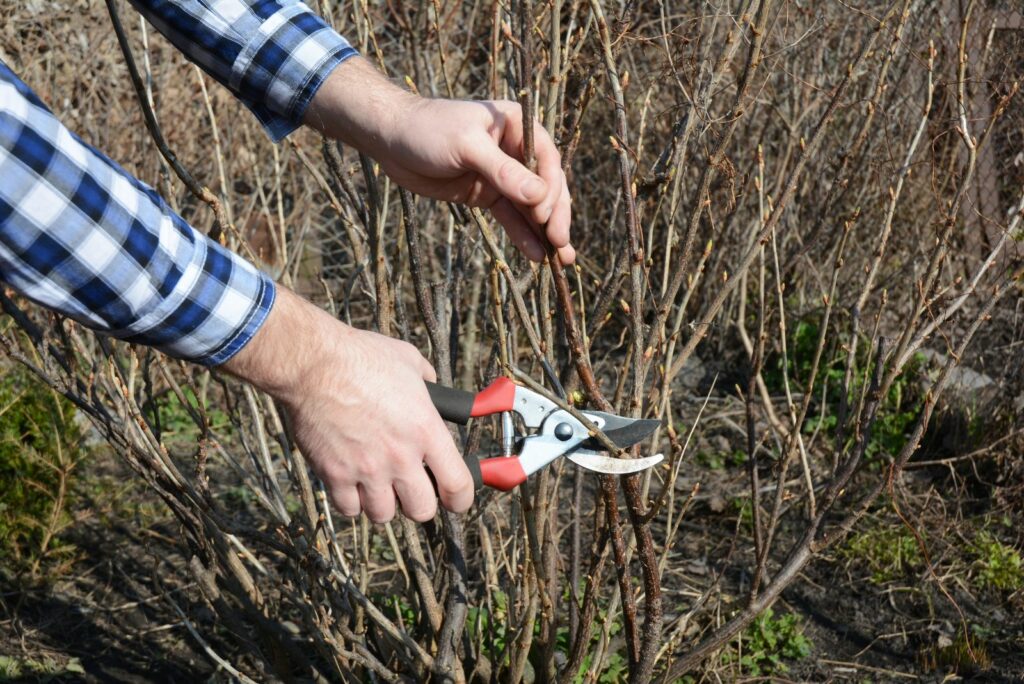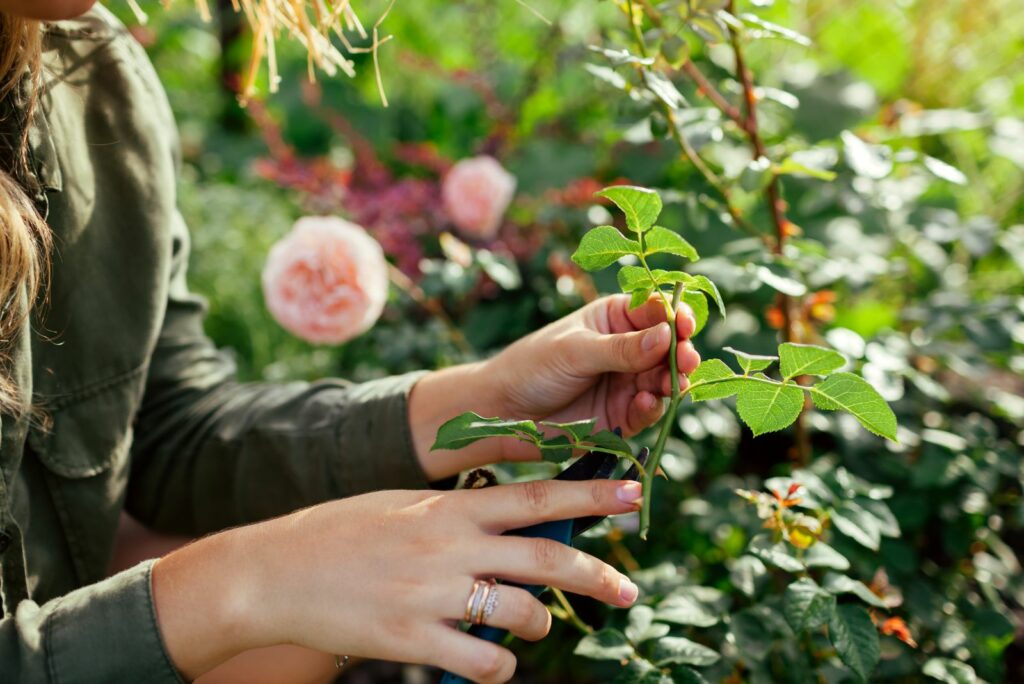Fall is a fantastic time to take some hardwood cuttings and multiply your favorite plants without much effort!
I was super nervous the first time I did it, but hardwood cuttings are pretty tough and can grow into healthy new plants with a little patience. I’ve had great luck with roses, but you can try other shrubs, too!
Not sure which hardwood cuttings to try?
Stick around as I’m about to share some tried-and-true options that are sure to thrive!
1. Dogwood Has Fiery Stems That Are Ideal For Taking Cuttings
You can’t talk about beautiful winter bark without mentioning our lovely native dogwood trees!
There are so many types of dogwood to choose from, so you can definitely find a match for your garden (my personal fave is flowering dogwood).
When all the leaves are gone as the fall comes around, you’re left with stunning, fiery stems that are just great for taking hardwood cuttings!
If you are ready, go ahead and make a clean cut at the base of the stem and trim away any extra branches, leaving about 8 to 10 inches.
One big mistake when cutting stems is picking the wrong spot. Always cut just below a leaf node, because that’s where all the hormones your plants need to grow are.
Related: Follow These Tips To Make Your Cherokee Princess Dogwood Thrive Like Never Before
2. Forsythia Is Easy To Grow And Propagate
Mid-fall through winter is the best time to trim this plant and take hardwood cuttings for propagation.
You probably already know that growing forsythia is super easy, but taking hardwood cuttings is just as simple!
In early to mid-fall, the leaves on forsythia turn a lovely vibrant color. Just wait until later in the season when the leaves start to slowly fall off.
When you’re ready, cut around six inches of new growth from this year. Remember to cut below a node and at an angle (that’s the secret for success!).
I would recommend using a rooting hormone since it can give your cuttings a boost. After applying it, you should put it in your already prepared potting mix that drains well. Keep them in a bright spot and make sure they don’t dry out.
Related: This Is What You Should Do With Your Forsythia This May To Get More Blooms The Next Season
3. Viburnum Grows Fast So You’ll Have A New Plant In No Time
Viburnum is a favorite among gardeners for good reason – this fast-growing shrub not only has lovely fragrant flowers but it also produces bright berries throughout winter and early spring!
To propagate viburnum, start by taking an angled cutting about eight to ten inches long with several buds. And again, cutting at an angle helps because it encourages root growth by exposing more surface area to the nutrients in the potting mix.
Next, remove any leaves from your cutting, dip the end in water, and then into a bit of rooting hormone. This mimics the plant’s natural rooting hormones which helps your cutting to sprout.
Once dipped, place the cutting in a mix of 40% peat moss and 60% perlite. Push it down about two-thirds into the mix. Keeping the cutting consistently moist and in a bright, warm spot will help it develop strong roots.
Related: If You Want Your Snowball Viburnum To Produce More Gorgeous Blooms, Prune It This Way
4. Wait For The Fall To Multiply Your Blackcurrant Bush
When fall arrives, fruit trees and shrubs go dormant, which is why it is the ideal time to take some hardwood cuttings and use them for propagation. Blackcurrants, in particular, are a fantastic choice.
If you want to multiply your Blackcurrant, all you need is a six-inch cutting from healthy stems. Well-draining soil is a must as they can easily rot if they’re sitting in water.
Aim for a young, disease-free plant and pick a stem with around eight nodes. You should bury six of those nodes in the soil because its roots are sprouting underground.
Fall’s colder weather can make rooting a bit tricky, but you can do it in a greenhouse or even a DIY setup – mix equal parts perlite and potting soil, damp it, and place it in a plastic soda bottle (with the top cut off and drainage holes in the bottom).
This creates a nice and cozy environment that keeps moisture and heat trapped, which ultimately gives your cuttings the best chance to root.
Related: When And How To Prune Blackcurrants For A Huge Harvest
5. Take Some Cuttings And Multiply Your Roses
Ahh, roses… I haven’t met a gardener who doesn’t want them in their yard. Luckily, they are super easy to propagate, so you can have a bunch of roses all over!
Start by selecting a cutting from this year’s growth that’s about eight inches long. Make the cut just below any rosehips that have started to form.
Don’t forget to remove the flower and leaves to help the cutting focus all its energy on growing roots. Cut the bottom of the stem at an angle for a larger surface area to absorb moisture.
A little rooting hormone is required to encourage those roots. Then, place your new plant into a mix that drains well and keep it comfy with plenty of warmth, light, and moisture.
Ready to start propagating?
Just wait for fall and grab some of these hardwood cuttings! Follow these simple steps, and soon you’ll have an abundance of new plants to enjoy in your garden.
Related: Follow These 4 Easy Steps To Effortlessly Transplant Your Roses And Maximize Their Beauty

